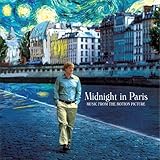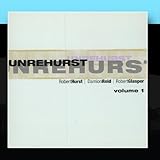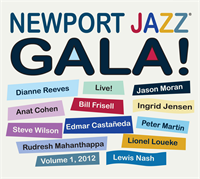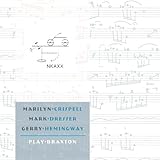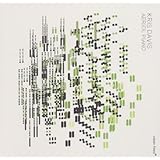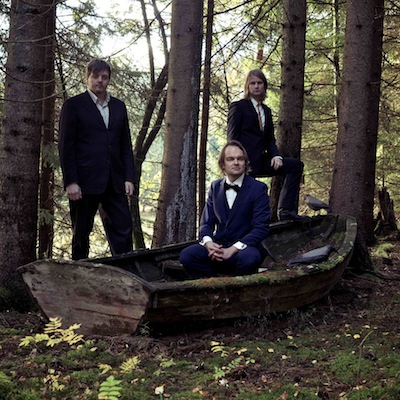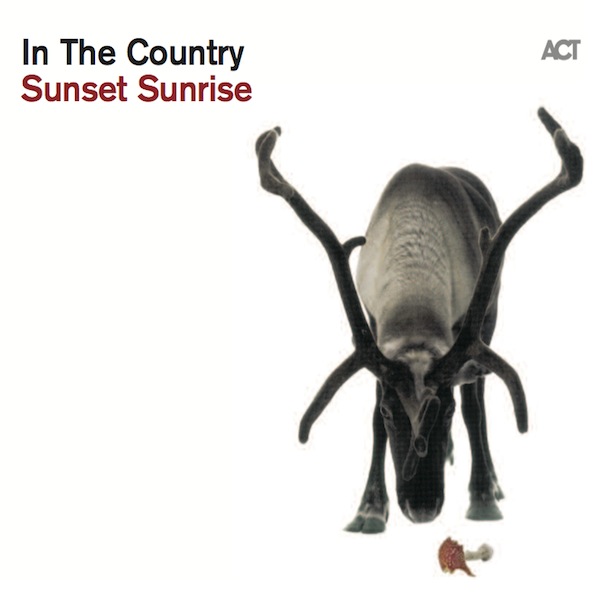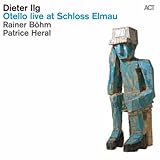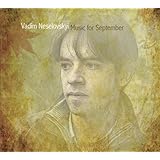In 1987 he formed the George Robert-Tom Harrell Quintet, a group from 1987 to 1992 that recorded five albums. He later moved to Canada, and toured that country as well as the world with his quartet, featuring Dado Moroni, Isla Eckinger and Peter Schmidlin.
In 1995 George was chosen as Director of the Swiss Jazz School and returned home to lead the program for the next 11 years. In 2003 he founded the Swiss Jazz Orchestra and earned the Suisse Foundation Award for his outstanding international career. He also toured with Phil Woods during that period and recorded several CDs with him.
He has had a long-lasting musical partnership with Kenny Barron and has toured Europe with him and together they have a number of recordings. In 2006 George moved to Lausanne and was hired as Director of the newly-created Haute Ecole de Musique de Lausanne which has the only jazz department in the University of Applied Sciences of Western Switzerland (HES-SO), the largest university in the country. In 2009 he was honored by the French government and received the medal of Officer in the Order of Arts and Letters, in recognition for his outstanding international musical career.
Throughout his career Robert has recorded well over fifty albums as a leader and performed with a who's who of modern jazz: Toshiko Akiyoshi, Jeff Ballard, Kenny Barron, Giani Basso, George Benson, Jerry Bergonzi, Randy Brecker, Brian Bromberg, Ray Brown, Terri Lyne Carrington, Bill Charlap, John Clayton, Jimmy Cobb, Billy Cobham, Chick Corea, Eddie Daniels, Jesse Davis, Joey DeFrancesco, Paquito D’Rivera, Billy Drummond, Jon Faddis, Paolo Fresu, Hal Galper, Benny Green, Larry Grenadier, Johnny Griffin, George Gruntz, Charlie Haden, Jeff Hamilton, Lionel Hampton, Slide Hampton, Tom Harrell, Billy Hart, Louis Hayes, Jimmy Heath, Fred Hersch, Billy Higgins, Daniel Humair, Hank Jones, Lee Konitz, Diana Krall, Michel Legrand, John Lewis, Dave Liebman, Joe Lovano, Russell Malone, Phil Markowitz, Cecil McBee, Ron McClure, Bobby McFerrin, Jim McNeely, Bob Mintzer, James Moody, Dado Moroni, Lewis Nash, Adam Nussbaum, Nicolas Payton, Alvin Queen, Rufus Reid, Alex Riel, Claudio Roditi, Renee Rosnes, Wallace Roney, Arturo Sandoval, Bud Shank, Lew Tabackin, Clark Terry, Toots Thielemans, Steve Turre, Mads Vinding, Kenny Washington, Peter Washington, Frank Wess, Buster Williams, Jimmy Woode, Phil Woods, and many others.
So why is he largely unknown in the United States? Most likely becuase his CDs as a leader have been on European labels like TCB, Mons, and GPR so they are not well-publicized here. He first came to my attention a few years ago with the CD "Inspiration" (TCB 2000) as I was looking through Kenny Barron's catalogue and noted how he had often played as a sideman to George Robert. On this particular CD he was joined by Rufus Reid and Kenny Washington. Given such a powerhouse trio behind him, I figured that M. Robert had to be an outstanding saxophonist, and I was proven correct. Since that time I have invested more time and money into M. Robert's catalogue, purchasing "Peace" (DIW 2003), a duo with Barron on the Japanese import label; and several others.
 "Inpiration" is taken from a live concert in Lausanne in 1999 with the aforementioned trio of Barron, Reid, and Washington. Robert on alto saxophone is out front and wrote six of the eight tunes. This a a group that knows how to swing. The two covers are "You Don't Know What Love Is" and "East of the Sun". Dedications are clear from the song titles -- "Blues for C.T." to frequent partner Clark Terry, "My Man Kenny" for Barron, "Dexter" for Dexter Gordon, "Cannonization" for Cannonball Adderley, and even "Mom's Song." The tribute to Terry is a lively upbeat blues song with a hard driving melody line, while "My Man Kenny" is as one might expect a toe tapping hard bop/post bop piece. Robert has a nice tone on alto and high speed delivery that avoids shrillness, and can really blow it out like on "Cannonization." And Barron picks up the same groove when he comes in, and then Reid to the continuing delight of the audience. The embodiment of Robert's sound and taste is beautifully heard on the warm and lyrical interpretation of "You Don't Know What Love Is" as a duo with Barron. The trio is fabulous, with Washington pushing the beat and livening the music and some nice soloing from the big sounding Reid. But it is the sophistication of Barron that stands out as Robert's partner as the two trade melodies and imporvisations seamlessly. Barron's touch on "Mom's Song" is a joy to behold when he takes the reins from Robert after his own stirring opening. And Reid doesn't let up with his solo either. Clearly these guys all love their mothers.
"Inpiration" is taken from a live concert in Lausanne in 1999 with the aforementioned trio of Barron, Reid, and Washington. Robert on alto saxophone is out front and wrote six of the eight tunes. This a a group that knows how to swing. The two covers are "You Don't Know What Love Is" and "East of the Sun". Dedications are clear from the song titles -- "Blues for C.T." to frequent partner Clark Terry, "My Man Kenny" for Barron, "Dexter" for Dexter Gordon, "Cannonization" for Cannonball Adderley, and even "Mom's Song." The tribute to Terry is a lively upbeat blues song with a hard driving melody line, while "My Man Kenny" is as one might expect a toe tapping hard bop/post bop piece. Robert has a nice tone on alto and high speed delivery that avoids shrillness, and can really blow it out like on "Cannonization." And Barron picks up the same groove when he comes in, and then Reid to the continuing delight of the audience. The embodiment of Robert's sound and taste is beautifully heard on the warm and lyrical interpretation of "You Don't Know What Love Is" as a duo with Barron. The trio is fabulous, with Washington pushing the beat and livening the music and some nice soloing from the big sounding Reid. But it is the sophistication of Barron that stands out as Robert's partner as the two trade melodies and imporvisations seamlessly. Barron's touch on "Mom's Song" is a joy to behold when he takes the reins from Robert after his own stirring opening. And Reid doesn't let up with his solo either. Clearly these guys all love their mothers.  "Peace" is a duo recording by Robert and Barron that is long on lyricism and creativity, as the two tackle three Robert originals, "Song for Abdullah" by Barron, and six covers including a stunning "Soul Eyes" "Softly as in a Morning Sunrise" "I Didn't Know What Time it Was" and "'Round Midnight." Once again the touch of Barron and alto tones of Robert are well matched to bring out the melodies and emotions inherent in the music, whether they be in the ballads or in the spritely delivery of "Blue Monk." And Barron stuns with his introduction to "'Round Midnight" and the solo outing on "Song for Abdullah."
"Peace" is a duo recording by Robert and Barron that is long on lyricism and creativity, as the two tackle three Robert originals, "Song for Abdullah" by Barron, and six covers including a stunning "Soul Eyes" "Softly as in a Morning Sunrise" "I Didn't Know What Time it Was" and "'Round Midnight." Once again the touch of Barron and alto tones of Robert are well matched to bring out the melodies and emotions inherent in the music, whether they be in the ballads or in the spritely delivery of "Blue Monk." And Barron stuns with his introduction to "'Round Midnight" and the solo outing on "Song for Abdullah." Once you hear these CDs you'll wonder why George Robert is not a household name in jazz, at least in the U.S. His tone, expressive play, and choice of partners is impeccable, as demonstrated on these and other recordings. This is mainstream music of the highest order.
